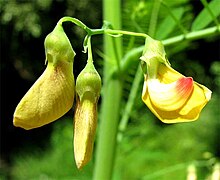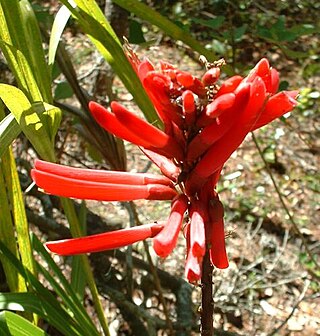
Erythrina herbacea, commonly known as the coral bean, Cherokee bean, Mamou plant in South Louisiana, red cardinal or cardinal spear, is a flowering shrub or small tree found throughout the southeastern United States and northeastern Mexico; it has also been reported from parts of Central America and, as an introduced species, from Pakistan. Various other systematic names have been used for this plant in the past, including Erythrina arborea, Erythrina hederifolia, Erythrina humilis, Erythrina rubicunda, Corallodendron herbaceum and Xyphanthus hederifolius.

Sesbania is a genus of flowering plants in the pea family, Fabaceae, and the only genus found in tribe Sesbanieae. Riverhemp is a common name for plants in this genus. Notable species include the rattlebox, spiny sesbania, and Sesbania sesban, which is used in cooking. Plants of this genus, some of which are aquatic, can be used in alley cropping to increase the soil's nitrogen content. The species of rhizobia responsible for nitrogen fixation in Sesbania rostrata is Azorhizobium caulinodans.
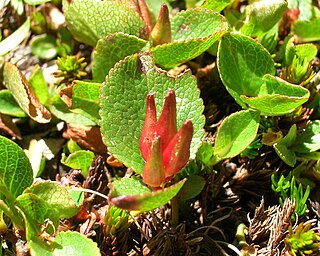
Salix herbacea, the dwarf willow, least willow or snowbed willow, is a species of tiny creeping willow adapted to survive in harsh arctic and subarctic environments. Distributed widely in alpine and arctic environments around the North Atlantic Ocean, it is one of the smallest woody plants.

Nephrolepis exaltata, known as the sword fern or Boston fern, is a species of fern in the family Nephrolepidaceae. It is native to the Americas. This evergreen plant can reach as high as 40–90 centimetres (16–35 in), and in extreme cases up to 1.5 metres. It is also known as the Boston sword fern, wild Boston fern, Boston blue bell fern, tuber ladder fern, or fishbone fern.

Erica carnea, the winter heath, winter-flowering heather, spring heath or alpine heath, is a species of flowering plant in the family Ericaceae, native to mountainous areas of central, eastern and southern Europe, where it grows in coniferous woodlands or stony slopes.
The name coffeeweed or coffee weed may refer to various plants used as coffee substitutes, including:
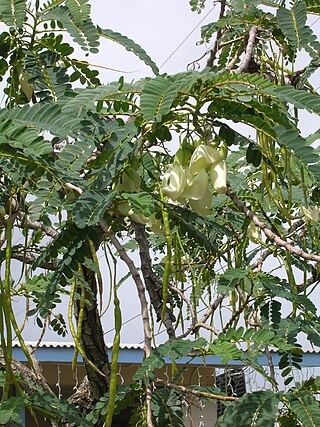
Sesbania grandiflora, commonly known as vegetable hummingbird, katurai, agati, or West Indian pea, is a small leguminous tree native to Maritime Southeast Asia and Northern Australia. It has edible flowers and leaves commonly eaten in Southeast Asia and South Asia.
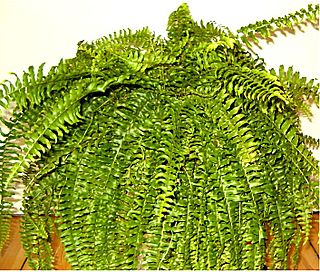
Nephrolepis is a genus of about 30 species of ferns. It is the only genus in the family Nephrolepidaceae, placed in the suborder Aspleniineae of the order Polypodiales in the Pteridophyte Phylogeny Group classification of 2016. The genus is commonly referred to as macho ferns or Boston ferns. The fronds are long and narrow, and once-pinnate, in the case of one Bornean species reaching thirty feet in length.

Sesbania tomentosa, commonly known as Oahu riverhemp and ʻōhai, is an endangered species of plant in the pea family, Fabaceae, that is endemic to the main Hawaiian Islands as well as Nihoa and Necker Island. It inhabits low shrublands and, rarely, dry forests, at elevations from sea level to 2,500 ft (760 m). Associated native plant species include akiʻaki, ilima, naupaka kahakai, and pili. Off-road vehicles, wildfires, grazing, and alien species competition have destroyed their habitat on the main islands, but they are still quite common on Nihoa and Necker. At least 2000 specimens grow on Nihoa, while there are far less on Necker.

Rhododendron macrophyllum, the Pacific rhododendron, California rosebay, California rhododendron, coast rhododendron or big leaf rhododendron, is a large-leaved species of Rhododendron native to the Pacific Coast of North America. It is the state flower of Washington.

The legume Sesbania bispinosa, also known as Sesbania aculeata (Willd.) Pers., is a small tree in the genus Sesbania.
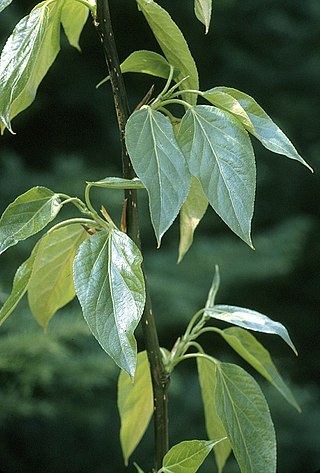
Populus balsamifera, commonly called balsam poplar, bam, bamtree, eastern balsam-poplar, hackmatack, tacamahac poplar, tacamahaca, is a tree species in the balsam poplar species group in the poplar genus, Populus. The genus name Populus is from the Latin for poplar, and the specific epithet balsamifera from Latin for "balsam-bearing".

Smilax herbacea, the smooth carrionflower or smooth herbaceous greenbrier, is a plant in the catbriar family. It is native to eastern Canada and the eastern United States. Its preferred natural habitat is rich forests, and riparian thicket and meadows.
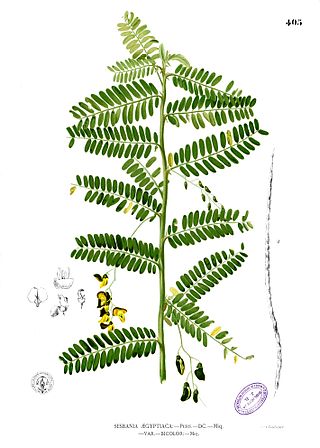
Sesbania sesban, the Egyptian riverhemp, is a species of plant in the legume family, a fast growing species, it has four varieties that are currently recognized.

Ageratina herbacea is a North American species of flowering plants in the family Asteraceae known by the common names fragrant snakeroot and Apache snakeroot. It is native to desert regions of the southwestern United States and northern Mexico. It grows in rocky slopes in conifer forests and woodlands.

Chloris virgata is a species of grass known by the common names feather fingergrassfeathery Rhodes-grass and feather windmill grass.

Scrophularia umbrosa, the green figwort, is a perennial herbaceous plant found in Europe and Asia. It grows in moist and cultivated waste ground.
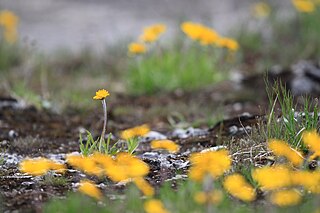
Tetraneuris herbacea is a rare species of flowering plant in the aster family known by the common names eastern fournerved daisy, lakeside daisy, fournerved starflower, and Manitoulin gold. It is native to and endemic to the Great Lakes region in North America, where it is present in Ontario, Ohio, Michigan, and Illinois. It is threatened by habitat destruction and degradation by several forces, including limestone quarrying, recreational activity, fire suppression, and construction. It is a federally listed threatened species of the United States and of Canada.

Sesbania punicea is an ornamental shrub with reddish-orange flowers. It has deciduous leaves and grows to a height of 15 feet. This plant has a high demand for water, and thrives in swamps or wet areas. It requires a mildly acidic soil, with a pH between 6.1 and 6.5.
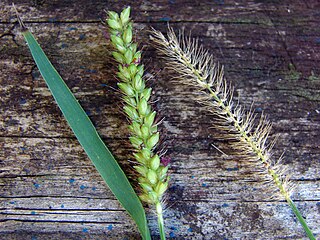
Setaria parviflora is a species of grass known by the common names marsh bristlegrass, knotroot bristle-grass, bristly foxtail and yellow bristlegrass. It is native to North America, including Mexico and the United States from California to the East Coast, Central America and the West Indies, and South America.
